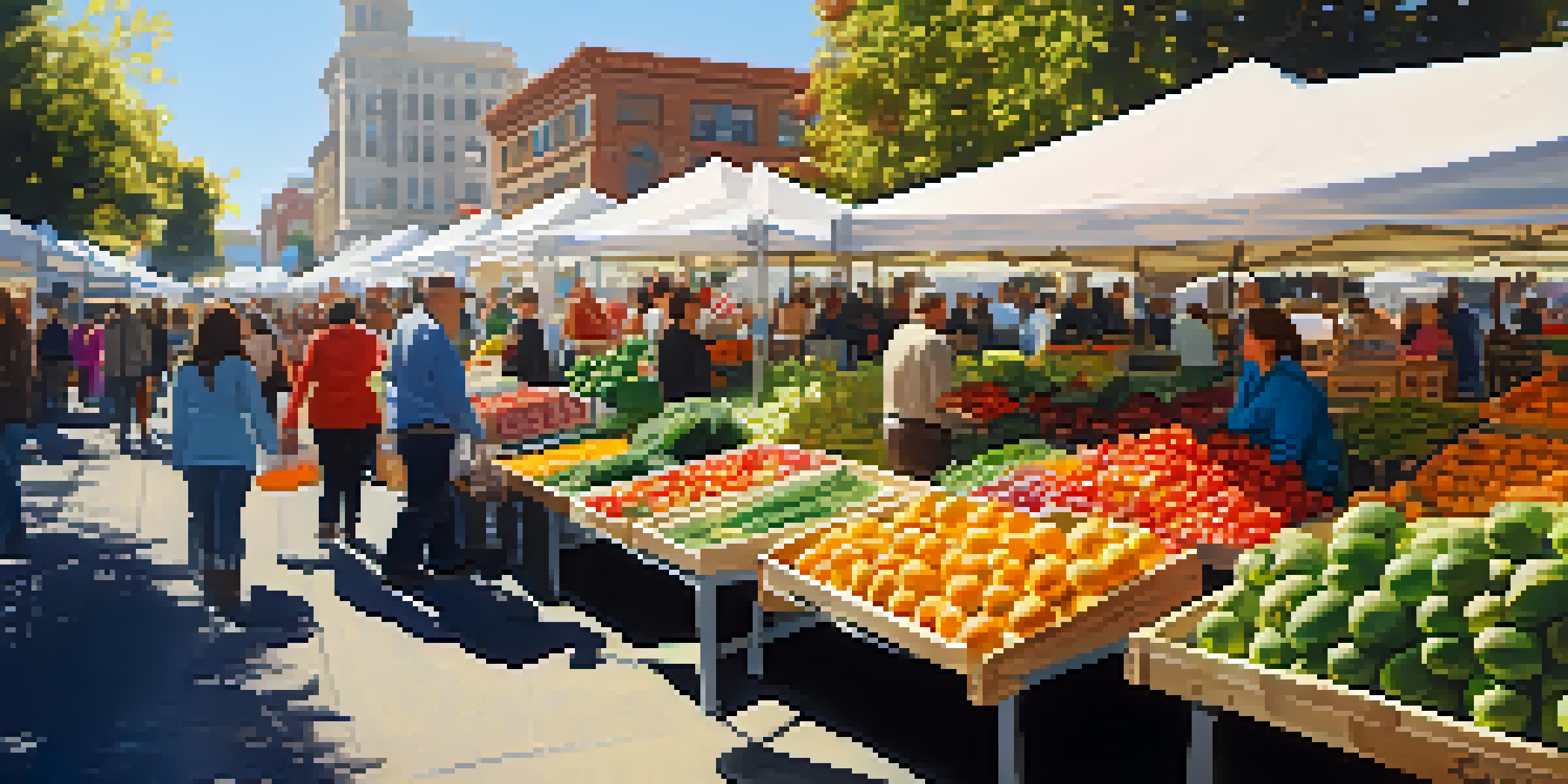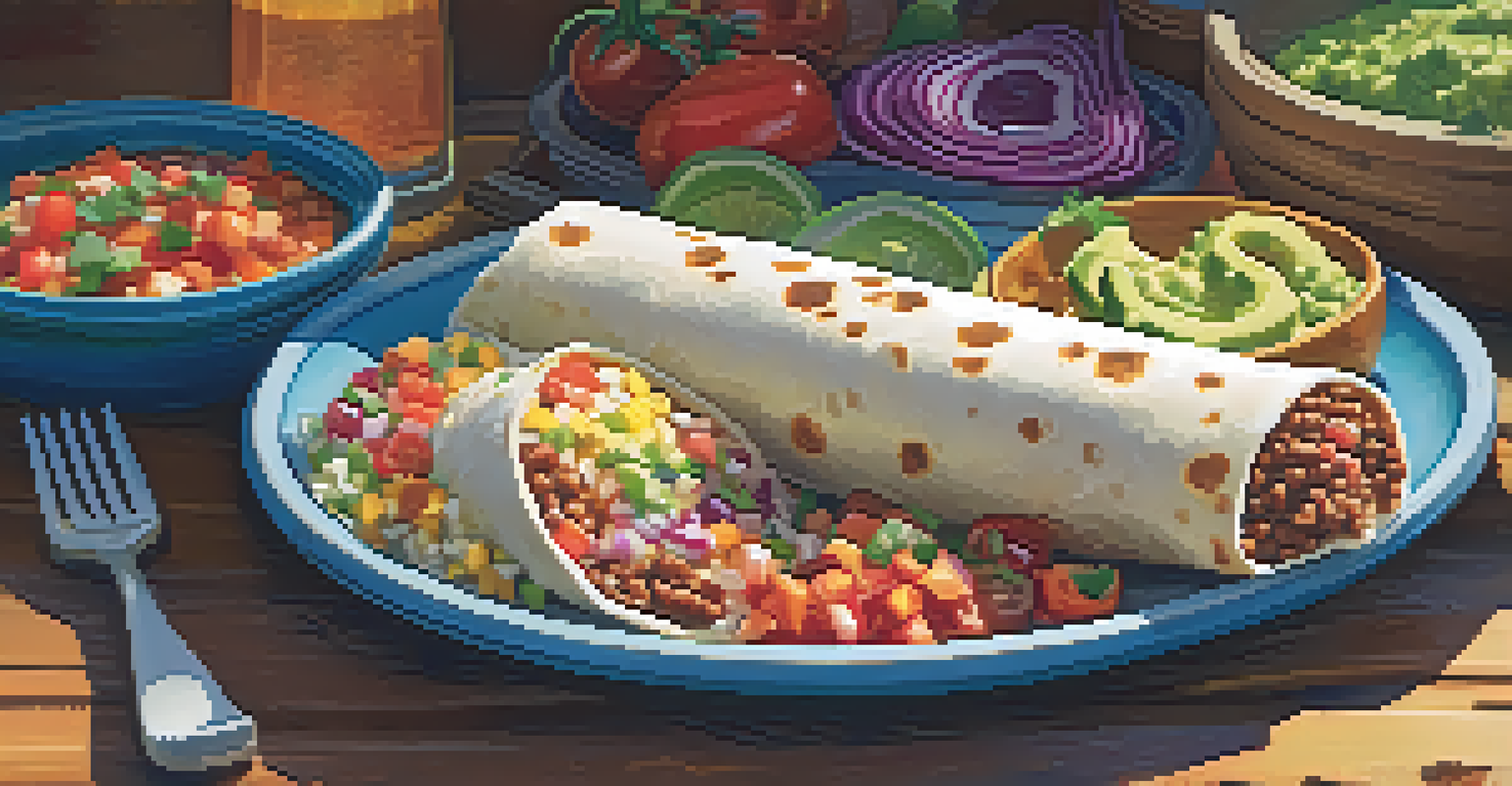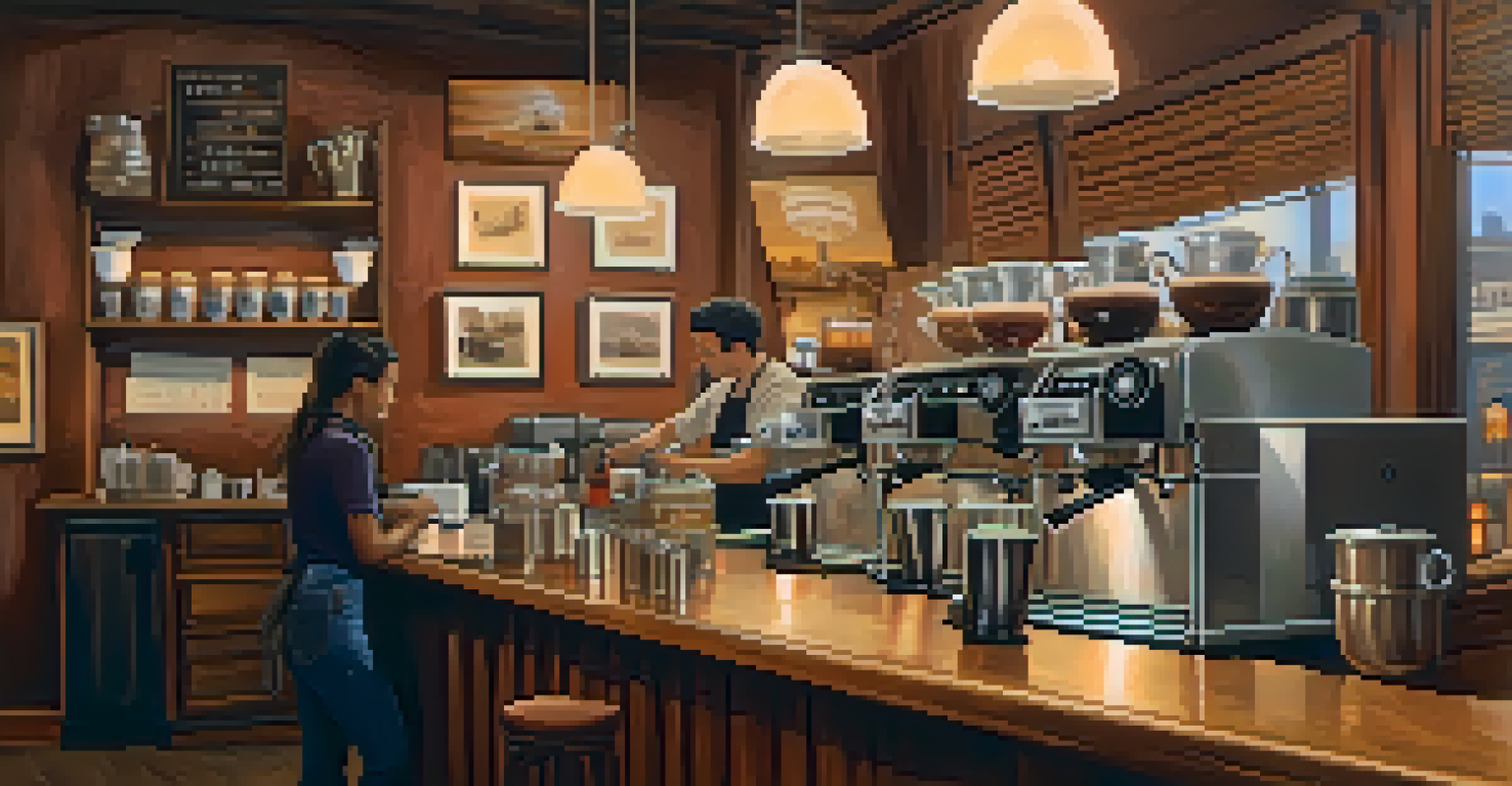Culinary Arts in San Francisco: A Feast for the Senses

The Rich Tapestry of San Francisco's Culinary Scene
San Francisco is a melting pot of cultures, and its culinary arts reflect this diversity beautifully. From the bustling food stalls at the Ferry Building Marketplace to the fine dining establishments of Nob Hill, the city offers a feast for every palate. The combination of fresh, local ingredients with international flavors creates a unique dining experience that is unmatched elsewhere.
Food is our common ground, a universal experience.
With its proximity to the Pacific Ocean and fertile farmland, San Francisco benefits from an abundance of high-quality produce and seafood. This access not only enhances the flavors of dishes but also supports local farmers and fishermen. Chefs in the city often prioritize sustainability, showcasing seasonal ingredients that celebrate the region's agricultural bounty.
Related Resource
Moreover, the culinary arts in San Francisco extend beyond just food; they encompass an entire culture of innovation and creativity. Many chefs here are not afraid to experiment, merging traditional techniques with modern twists to craft dishes that surprise and delight. This spirit of experimentation keeps the culinary scene fresh and exciting.
Iconic Dishes That Define the City
When you think of San Francisco, certain iconic dishes come to mind, such as clam chowder served in a sourdough bread bowl. This comforting dish is a staple for locals and tourists alike, and it perfectly captures the essence of the city's seafood heritage. Each spoonful is not just about flavor; it's an experience, especially when enjoyed with a stunning view of the Bay.

Another must-try is the famous Mission-style burrito, a hefty wrap filled with rice, beans, and a choice of ingredients that originated in the Mission District. This dish is not just a meal; it's a cultural phenomenon that reflects the city's vibrant Latino community. The burrito's generous size and delicious flavors make it a favorite among foodies on the go.
Diverse Culinary Influences
San Francisco's culinary scene reflects a vibrant blend of cultures, showcasing both local ingredients and international flavors.
Lastly, don't miss out on the artisanal coffee that has taken the city by storm. With local roasters and cafes emphasizing quality and craftsmanship, San Francisco has become a haven for coffee lovers. Whether you prefer a rich espresso or a smooth pour-over, the city's coffee scene is a testament to its dedication to culinary excellence.
The Role of Farmers' Markets in Culinary Arts
Farmers' markets play a crucial role in San Francisco's culinary arts, acting as a bridge between local producers and chefs. These markets showcase the freshest produce, meats, and artisan goods, allowing chefs to connect directly with the sources of their ingredients. It's not uncommon to see top chefs shopping for their restaurants, ensuring that they serve the best of what the season has to offer.
The only thing I like better than talking about food is eating.
Visiting a farmers' market is also a sensory experience. The vibrant colors of fresh fruits and vegetables, the enticing aromas of baked goods and flowers, and the friendly chatter between vendors and customers create a lively atmosphere. This experience highlights the importance of community in San Francisco's culinary landscape.
Related Resource
By supporting farmers' markets, diners can enjoy meals that are not only delicious but also support local economies. This emphasis on local sourcing reflects the city's commitment to sustainability and responsible eating, making every bite a part of a larger story.
Culinary Education: Nurturing Future Chefs
San Francisco is home to several prestigious culinary schools that are training the next generation of chefs. Institutions like the Culinary Institute of America and City College of San Francisco offer programs that blend hands-on experience with theoretical knowledge. Students learn not only how to cook but also the importance of creativity and presentation in culinary arts.
These schools often emphasize the significance of local ingredients and sustainability in their curriculum. By instilling these values in aspiring chefs, they ensure that the future of culinary arts in San Francisco remains vibrant and responsible. Many graduates go on to open their own restaurants, contributing to the city's rich culinary tapestry.
Farmers' Markets Boost Local Cuisine
Farmers' markets in the city connect chefs with local producers, promoting sustainability and fresh, seasonal ingredients.
Additionally, culinary education extends beyond formal institutions. Numerous workshops and cooking classes are available for home cooks and food enthusiasts alike. This accessible approach allows more people to explore the culinary arts, fostering a deeper appreciation for the craft and encouraging creativity in the kitchen.
The Influence of Food Trends on Local Cuisine
San Francisco is often at the forefront of food trends, influencing culinary practices not just locally but across the nation. From the rise of farm-to-table dining to the increasing popularity of plant-based menus, the city embraces innovation while honoring tradition. This dynamic environment encourages chefs to think outside the box and experiment with new flavors and techniques.
For instance, the plant-based movement has taken San Francisco by storm, with many restaurants offering creative vegan and vegetarian dishes that appeal to diverse palates. This shift not only caters to health-conscious diners but also demonstrates a commitment to sustainability. As more people seek eco-friendly dining options, chefs are rising to the challenge, crafting dishes that are both delicious and environmentally responsible.
Related Resource
Moreover, social media plays a significant role in shaping food trends. Instagrammable dishes and unique food experiences often gain traction quickly, encouraging restaurants to innovate continually. This vibrant exchange of ideas keeps the culinary scene fresh and exciting, ensuring that there is always something new to discover.
Dining Experiences: Beyond Just the Meal
In San Francisco, dining is about more than just the food; it's an experience that engages all the senses. Many restaurants create an atmosphere that complements their culinary offerings, with thoughtful decor, music, and service enhancing the overall experience. This attention to detail makes dining out feel special, whether it's a casual meal or a fine dining event.
Unique dining experiences, such as themed pop-up restaurants or food tours, are also popular in the city. These experiences allow diners to explore different cuisines and cultures, often featuring collaborations between local chefs and international guest chefs. It's a wonderful way to celebrate the city’s culinary diversity while making lasting memories.
Future Trends Shape Dining Culture
The city's culinary landscape is evolving with a focus on sustainability, technology, and innovative dining experiences.
Moreover, many restaurants are now focusing on interactive dining experiences, where guests can engage with the cooking process. From chef’s tables to cooking classes, these offerings allow diners to learn more about the culinary arts while enjoying a delicious meal. This connection to the food fosters a deeper appreciation and understanding of the craft.
The Future of Culinary Arts in San Francisco
As we look to the future, the culinary arts in San Francisco are poised for continued growth and evolution. With an ever-increasing focus on sustainability, innovation, and community, the city's food scene is likely to remain dynamic and exciting. Chefs will continue to push boundaries, exploring new ingredients and techniques to delight diners.
Technology is also playing a role in shaping the future of culinary arts. From food delivery apps to online cooking classes, the way we experience food is changing. These advancements make culinary education and dining more accessible, allowing a broader audience to engage with the culinary world.

Ultimately, the essence of San Francisco's culinary arts lies in its ability to adapt and thrive. As new trends emerge and culinary boundaries are tested, the city's dedication to quality, creativity, and community will ensure that it remains a culinary capital for years to come.